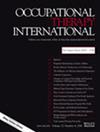在澳大利亚小学从事校本实践工作的职业治疗师简介
IF 0.9
4区 医学
Q3 REHABILITATION
引用次数: 0
摘要
全纳教育增加了对校本职业治疗服务的需求,也重新定义了主流学校的职业治疗实践。现在,人们希望治疗师在分层干预模式下与教师合作,支持所有学生(包括残疾学生)在自然课堂环境中的接触和参与。学校职业疗法已成为一个专业化的实践领域,因为治疗师是在教育系统和流程中工作,而不是在健康系统和流程中工作。虽然需求的增长和实践范围的扩大对这一行业来说是积极的,但预计的劳动力短缺以及专业化和强化实践的必要性带来了巨大的挑战。该专业是否有能力全力支持全纳教育系统的需求,目前仍不清楚。有关校本治疗师队伍的准确、最新信息是规划未来人员需求的基础,因此了解该队伍的现状至关重要。有关这一日益增长的实践领域的全国性数据十分匮乏。本研究旨在描述校本职业治疗师的现状,以便更好地了解澳大利亚的职业治疗师队伍、实践模式和资金状况。在这项定量研究中,我们对在新南威尔士州、昆士兰州和维多利亚州主流小学工作的 108 名澳大利亚儿科职业治疗师进行了抽样调查,并采用描述性统计方法进行了分析。研究结果提供了一些有关澳大利亚校本治疗的劳动力和实践的见解,为这一重要且不断发展的儿科实践领域的未来规划提供了初步数据。虽然研究结果是针对当地情况的,但也需要进行跨国和全球比较,以揭示不同环境下的普遍趋势和当地的细微差别。本文章由计算机程序翻译,如有差异,请以英文原文为准。
A Profile of Occupational Therapists Working in School-Based Practice in Australian Primary Schools
Inclusive education has increased the demand for school-based occupational therapy services and has reconceptualised the practice in mainstream schools. Therapists are now expected to work collaboratively with teachers within tiered intervention models to support access and participation of all students, including those with disabilities, within the natural classroom context. School-based occupational therapy has become a specialised area of practice, as therapists work within educational, rather than health, systems and processes. While the growth in demand and expanded scope of practice is positive for the profession, predicted workforce shortages and the necessity for specialised and enhanced practice present significant challenges. The ability of the profession to fully support the demands of an inclusive education system remains unclear. As accurate, up-to-date information on the school-based therapy workforce is the foundation for planning future personnel needs, knowledge of the current state of the workforce is critical. There is a paucity of national data regarding this growing area of practice. The aim of this study is to describe a current profile of school-based occupational therapists to better understand the workforce, practice patterns, and the funding landscape in Australia. A convenient and purposive sample of 108 Australian paediatric occupational therapists working in mainstream primary schools in New South Wales, Queensland, and Victoria was surveyed in this quantitative study, which was analysed using descriptive statistics. Results provide some insights into the workforce and practice of school-based therapy in Australia offering preliminary data for future planning in this important and growing area of paediatric practice. While specific to the local context, results invite cross-national and global comparison to reveal universal trends and localised nuances across diverse settings.
求助全文
通过发布文献求助,成功后即可免费获取论文全文。
去求助
来源期刊

Occupational Therapy International
REHABILITATION-
CiteScore
2.50
自引率
6.70%
发文量
121
审稿时长
>12 weeks
期刊介绍:
Occupational Therapy International is a peer-reviewed journal, publishing manuscripts that reflect the practice of occupational therapy throughout the world. Research studies or original concept papers are considered for publication. Priority for publication will be given to research studies that provide recommendations for evidence-based practice and demonstrate the effectiveness of a specific treatment method. Single subject case studies evaluating treatment effectiveness are also encouraged. Other topics that are appropriate for the journal include reliability and validity of clinical instruments, assistive technology, community rehabilitation, cultural comparisons, health promotion and wellness.
 求助内容:
求助内容: 应助结果提醒方式:
应助结果提醒方式:


